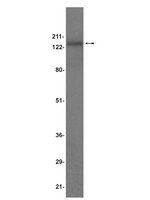STIM2 regulates PKA-dependent phosphorylation and trafficking of AMPARs.
Garcia-Alvarez, G; Lu, B; Yap, KA; Wong, LC; Thevathasan, JV; Lim, L; Ji, F; Tan, KW; Mancuso, JJ; Tang, W; Poon, SY; Augustine, GJ; Fivaz, M
Molecular biology of the cell
26
1141-59
2015
Mostrar resumen
STIMs (STIM1 and STIM2 in mammals) are transmembrane proteins that reside in the endoplasmic reticulum (ER) and regulate store-operated Ca(2+) entry (SOCE). The function of STIMs in the brain is only beginning to be explored, and the relevance of SOCE in nerve cells is being debated. Here we identify STIM2 as a central organizer of excitatory synapses. STIM2, but not its paralogue STIM1, influences the formation of dendritic spines and shapes basal synaptic transmission in excitatory neurons. We further demonstrate that STIM2 is essential for cAMP/PKA-dependent phosphorylation of the AMPA receptor (AMPAR) subunit GluA1. cAMP triggers rapid migration of STIM2 to ER-plasma membrane (PM) contact sites, enhances recruitment of GluA1 to these ER-PM junctions, and promotes localization of STIM2 in dendritic spines. Both biochemical and imaging data suggest that STIM2 regulates GluA1 phosphorylation by coupling PKA to the AMPAR in a SOCE-independent manner. Consistent with a central role of STIM2 in regulating AMPAR phosphorylation, STIM2 promotes cAMP-dependent surface delivery of GluA1 through combined effects on exocytosis and endocytosis. Collectively our results point to a unique mechanism of synaptic plasticity driven by dynamic assembly of a STIM2 signaling complex at ER-PM contact sites. | 25609091
 |
AKAP signaling in reinstated cocaine seeking revealed by iTRAQ proteomic analysis.
Reissner, KJ; Uys, JD; Schwacke, JH; Comte-Walters, S; Rutherford-Bethard, JL; Dunn, TE; Blumer, JB; Schey, KL; Kalivas, PW
The Journal of neuroscience : the official journal of the Society for Neuroscience
31
5648-58
2010
Mostrar resumen
To identify candidate proteins in the nucleus accumbens (NAc) as potential pharmacotherapeutic targets for treating cocaine addition, an 8-plex iTRAQ (isobaric tag for relative and absolute quantitation) proteomic screen was performed using NAc tissue obtained from rats trained to self-administer cocaine followed by extinction training. Compared with yoked-saline controls, 42 proteins in a postsynaptic density (PSD)-enriched subfraction of the NAc from cocaine-trained animals were identified as significantly changed. Among proteins of interest whose levels were identified as increased was AKAP79/150, the rat ortholog of human AKAP5, a PSD scaffolding protein that localizes signaling molecules to the synapse. Functional downregulation of AKAP79/150 by microinjecting a cell-permeable synthetic AKAP (A-kinase anchor protein) peptide into the NAc to disrupt AKAP-dependent signaling revealed that inhibition of AKAP signaling impaired the reinstatement of cocaine seeking. Reinstatement of cocaine seeking is thought to require upregulated surface expression of AMPA glutamate receptors, and the inhibitory AKAP peptide reduced the PSD content of protein kinase A (PKA) as well as surface expression of GluR1 in NAc. However, reduced surface expression was not associated with changes in PKA phosphorylation of GluR1. This series of experiments demonstrates that proteomic analysis provides a useful tool for identifying proteins that can regulate cocaine relapse and that AKAP proteins may contribute to relapse vulnerability by promoting increased surface expression of AMPA receptors in the NAc. | 21490206
 |









